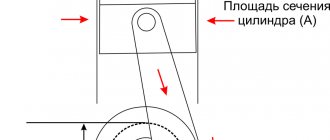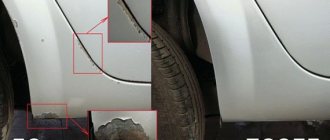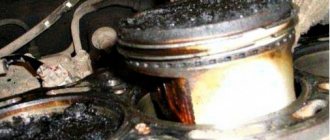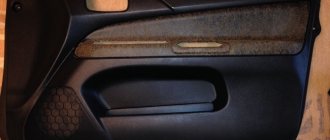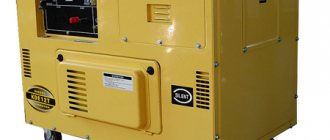The purpose of alloy wheels includes giving the vehicle an attractive appearance. To do this they must be clean and shiny. But this is difficult to achieve, since the disks are constantly exposed to adverse factors. How to effectively prepare alloy wheels for the winter?
In winter, alloy wheels are especially vulnerable to all types of contaminants - dust from brake pads, conflicting tires, sand, tar or salt, so more frequent cleaning or even flushing is important. Any chemicals that are used for road construction have a highly degrading effect on alloy wheels. Where to start to prepare alloy wheels for winter?
Metals can behave differently depending on how you treat them. Let's say, the specialists of the company https://dipchel.ru/store/">https://dipchel.ru/store/ know everything about composite products, since Dipchel LLC is the official representative of HC Composite in the Volga Federal District.
How to prepare car tires for hibernation
It is believed that the deadline for replacing summer wheels with winter ones is November 15th.
The first step is to remove the tires from the car, wash them and carefully inspect them. Before you prepare your wheels for hibernation, you should make sure that they will remain suitable for use next season. Check the tread height. If it is less than 1.6 mm (we are talking about passenger cars), then you can forget about preserving such tires; they are no longer suitable for use. If the tread pattern is not worn out, then it makes sense to ensure that the tires are properly stored so that you can start the next driving season without extra costs.
The off-season is a good time to patch up minor defects in tires. Therefore, the next step will be to inspect the tires for their presence and visit a tire shop for restoration.
There is no place for dirty tires on storage racks.
When the tires are cleared of dirt, washed, dried and ready for further use, it is worth marking them, for example, attach the mark PL to the front left wheel. This way you won’t get confused about the location of the wheels and, if necessary, next year you can swap the rear ones with the front ones. This manipulation will ensure optimal tire wear.
It is also worth treating tires with a special tire preservative solution or a similar product. Now the wheels are ready to wait for the next “change of shoes”, and in order for them to wait for it safe and sound, it is important to take care of the storage location.
We regularly inspect the wheels
The car owner needs to regularly inspect the wheels of the car to identify the following problems:
1. Damage to the protective coating of the disks.
2. Detection of foreign objects in the tread.
3. Disc contamination.
4. Presence of mechanical damage.
If you need to regularly wash rims and wheels, use special auto chemicals, which will keep your car clean, but you will also be able to notice the first signs of problems with tires and rims, which can be easily eliminated.
Optimal places and conditions for storing tires
The storage location of wheels is one of the key points on which their quality safety depends. Therefore, your choice should be approached responsibly and, preferably, in advance. It is worth remembering that it must comply with the requirements specified in GOST (GOST 24779–81: Pneumatic tires. Packaging, transportation, storage).
The first thing to remember is that tires like dark, cool rooms with relatively little humidity. Such a place should be clean, there should be no sudden changes in temperature and no direct sunlight.
In addition, avoid any contact of tires with substances such as gasoline, oil, all kinds of lubricants, paints and solvents. They can easily ruin the rubber. Ozone is also dangerous for tires. There should not be any copper objects or devices in the room with tires; if there are any in the future place for storing tires, it would be a good idea to get rid of them. If the room has radiators on the walls, they must be covered with a special screen.
Please note: the screen must be protective, not decorative
Additionally, it is worth ensuring the tires are protected from mechanical damage, i.e. they should not be dropped, nothing should fall or pile up on them, and there should be no sharp or other dangerous objects nearby that could damage them.
When storing tires, fluctuations in air temperature are allowed from –30ºС to +35ºС and relative humidity of 50–80%.
GOST 24779–81: Pneumatic tires. Packaging, transportation, storage
Going beyond the standards, frosts will not be particularly dangerous for tires, but do not forget that the temperature must be constant and its changes are unacceptable. Therefore, you can store tires outside or on an unglazed balcony for no more than one month. At the same time, they must be raised above the ground or floor and covered with waterproof, opaque material that protects from precipitation and other influences.
Ideal for storage would be a heated brick garage, a glassed-in balcony or a special storage for tires, because... The most suitable temperature is still considered to be +15 degrees. It is also possible to store wheels in the basement. But don't forget about humidity. She always needs to be controlled. The room must be ventilated. At the same time, there is no need to overdo it, because... Too dry air is an even greater enemy for rubber. It causes microcracks to form on the tires, and with their appearance, the use of the tires becomes impossible.
And the last thing that should be ensured for the wheels in the storage area is cleanliness. Avoid contact of the rollers with dust and dirt.
How, on what and in what position is it better to store tires with or without rims?
Once you have decided on the storage location, it is worth understanding in what position it is best to store tires. To do this, you need to choose whether the tires will be stored with or without rims. There are separate rules for each case.
It should be remembered that tires without rims should only be stored in a vertical position. It cannot be hung or stacked because... it may become deformed. After losing the factory molds, the rubber will become unusable.
Rules for storing tires with and without rims: notes for car enthusiasts
Assembled wheels, on the contrary, can only be hung or laid lying down, no more than two wheels in a stack.
Now you can choose a design for storing tires. There are a wide variety of pallets, racks, racks, brackets, cabinets and hooks available for these purposes. You can buy ready-made systems for home storage or make such devices yourself. The main thing is to take into account that freedom of storage must be respected, i.e. The tires should not touch each other and the absence of external load is important. You also need to turn them over once every 2-3 weeks to avoid deformation. If the tires are hanging with the rims, then they must not be in contact with each other, and the brackets must be securely attached so that the tires do not fall. When hanging cameras, special semicircular brackets are needed to distribute the load and avoid bending the camera in one place.
Wheel assemblies can be suspended from the ceiling in the garage
There are special bags and covers for storing rubber. They protect from ultraviolet radiation and allow air to pass through, which avoids the formation of condensation on the rubber. Regular plastic bags cannot be used to store wheels.
Properly store tires in special bags or covers.
Proper care of rims
First of all, the car owner will need to regularly and properly clean the wheels. Sand, salt, snow slush and adhered dirt can damage the protective layer of cast and forged wheels, which will lead to rapid failure of expensive wheels. You can wash the wheels yourself using appropriate auto chemicals or in specialized car washes.
The disks should be inspected to identify existing damage. Such identified defects must be eliminated as soon as possible by contacting the appropriate specialized workshops. If you leave traces of corrosion and other damage to the protective layer on the disk, this will lead to the fact that after just a few years of using such tires you will have to purchase new, expensive wheels.
During the operation of the car, there may be a violation of the geometry of the disks, which leads to noticeable wheel runout, premature tire wear, increased fuel consumption and other problems. It is necessary to restore the geometry of the disks using special equipment at tire service stations. At the same time, we note that in each specific case, the possibility of repairing disks will depend on the degree of damage to the wheel. In case of significant impacts and geometry violations, it will be impossible to restore their original shapes by simply rolling out the disks.
Also, stamped, cast or forged wheels may show signs of corrosion. In terms of safety, such corrosion does not affect the performance of the car, but from an aesthetic point of view, the appearance of the wheels and the entire car deteriorates significantly. If you notice the first traces of corrosion, it is necessary to clean such problem areas and treat them with special compounds, which will completely solve the problems with rust on the disks.
If used carelessly, damage to the protective coating may occur. If you notice that the paint has begun to peel off from your disk, you should paint the disks as soon as possible, and this must be done in a specialized workshop.
Stamped wheels may have small dents that occur when hitting a curb. Such damage can be removed using a special machine in a tire shop.
But cracks are most often found on forged wheels. They can be eliminated either by welding or by replacing damaged wheel elements.
Features of the safety of tube tires and tubes
Tube tires are stored according to the same principles as tubeless tires. The only thing worth considering when storing tires with tubes is their inflation. The tube must be inflated to a size comparable to the internal size of the tire.
At least once a month you need to turn the wheels around their axis so that they “breathe”. Also, during this procedure, you can prevent the appearance of cracks.
When tubes are stored separately from tires, they are hung on brackets with a semicircular surface. Tubes, like tube tires, should be rotated 180° around their axis.
Regardless of which tires you store, bicycle or car, you should never fold them or tie them up! Hanging only!
Are there differences in conditions for winter and summer
There is no fundamental difference between storing summer and winter tires. But the weather conditions in winter and summer are very different, so you should carefully monitor the temperature and humidity in both winter and summer and avoid excessive hypothermia or heating of the tires. It is also worth monitoring the air humidity; if in summer it may be too low, in winter it is the opposite.
The main dangerous factor for the safety of summer tires is direct sunlight. Too low temperatures are also undesirable for summer tires.
When storing winter tires, you need to ensure that the room is regularly ventilated, because... In hot weather in enclosed spaces they can heat up quickly.
If you noticed that during storage in the open air in the summer, a white coating began to appear on the tires, this means that the temperature regime is clearly not suitable for them (severe overheating).
Body protective coatings
These funds can be divided into the following groups:
- paint protection;
- anti-corrosion preparations for the underbody and fender liners;
- corrosion protectors in internal cavities.
Naturally, before treating the car body for the winter, go through a thorough wash. It is necessary to get rid of all layers of dirt and active chemicals that are present in large quantities on our asphalt concrete pavement. The presence of oils and fuel drips on body parts that are subject to treatment is also unacceptable.
Washing a car at a car wash
The bottom of the car is most exposed to external aggressive environments. To protect it, bitumen mastic is usually used. There are many options for drugs based on it. To use such a tool, a number of requirements must be met:
- after washing, the bottom of the car must be dried; mastic cannot be applied to a wet surface;
- degreasing of surfaces is mandatory - the protective layer can simply fall off from the untreated metal;
- let the mastic dry - do not leave the garage for 24 hours.
Typically this protection is applied to the bottom using a brush. Modern means allow use as a spray. In any case, you need to use a car wash before treating the underside of your car for the winter.
Pay special attention to the fender liners. Even if your car is equipped with plastic protection for these parts, this is not a 100% guarantee of complete safety. You can use the same mastic that was useful for treating the bottom. Coat the inner surfaces of the wings twice - this will be enough. The crumb rubber included in its composition, in addition to anti-corrosion properties, will add soundproofing to your car.
For the internal cavities of the body, it is best to use products with a more liquid consistency. They are poured into such areas using a spray gun. The most common remedy is Movil. They usually treat cars older than four years. The slightly unpleasant odor will go away in a few days. If your car is two to three years old, then this procedure is not mandatory. To use the product, you will have to thoroughly wash the car and dry the body with a stream of warm air.
Treating the car body with hard wax
Hard wax is highly recommended for car body treatment. Treatment with liquid wax is more cosmetic than protective. Hard wax protects the paintwork of a car well, much like an apple during long-term storage. Despite the rather high cost of the procedure, its effectiveness in winter has been proven by practice. This treatment is worth paying attention to, if only because ice does not linger on the body, drops of water flow down without stopping.
See also:
Types of car body polishes against scratches




